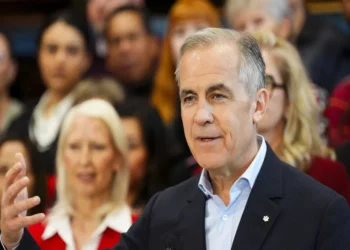One of Donald Trump’s primary justifications for imposing tariffs on foreign goods is to return and spur manufacturing in America. And Trump is not wrong for recognizing this reality; over the last several decades, much of America’s manufacturing sector has been gutted.
How and why this has occurred is a rather complicated story, but it does have to do with the promise of free trade markets that turned out not to be as free or as fair as many may have believed.
A classic example of this has been the U.S. steel industry. Long the world’s leader in quality steel production, over the last 30 years, American steel manufacturing has shrunk thanks to overseas competition that has undersold U.S. steel.
Today, the U.S. imports roughly 25% of its steel. In many instances, foreign steel is simply cheaper than the U.S. product. The leading exporters to America are Canada, Brazil, Mexico, South Korea, and Vietnam. Are they undercutting American companies because it costs less to manufacture there than in the U.S.?
The answer is, surprisingly, no. In fact, as of 2021, the cost of making steel in the U.S. was $707 per ton. That cost is comparable to what it costs in China, from which America imports roughly 2% of its steel. Meanwhile, the price for steel production for two of the largest exporters to the U.S. — Japan and Germany — is $855 per ton and $905 per ton, respectively.
So, how have these steel-producing nations been able to undercut U.S. steel production? The dirty little secret is government subsidies.
Via government subsidies, countries like China can produce and sell steel to American consumers at a loss, underselling and artificially undercutting American steel. Simply put, these countries’ governments have cheated the free market. By undercutting the competition, the competition eventually dies.
These foreign government subsidies, even more than tariffs, have gutted America’s manufacturing sector. If it weren’t for these subsidies, Americans would be buying more U.S. steel because it would not be priced higher than foreign competition. And Trump, with his tariffs specifically targeting foreign steel, is angling to correct this unfair market practice.
Speaking of building things, another domestic product that Trump wants to see grow again is the American lumber industry. The COVID pandemic exposed the extent to which Americans depend upon foreign-sourced products.
One reason housing prices have spiked since COVID has to do with foreign supply chain issues, and for new home building, that ties directly to the cost of lumber. Lumber prices jumped tremendously in the months and years after COVID hit, thanks largely to the fact that the U.S. sources much of its lumber from Canada, Germany, and Brazil.
Over the last 30 years, American dependence on foreign-sourced lumber has grown despite the massive amounts of timber within the U.S. To make matters worse, over the last couple of decades, the nation’s problems with wildfires have increased, much of this because forests that could be logged have been left to effectively turn into tinderboxes waiting to be ignited.
In lieu of this, Trump signed two executive orders in early March that called for the expansion of domestic lumber production, classifying it as a national security issue.
“We don’t need their lumber,” Trump stated regarding Canada. “We don’t need anything that they give. We do it because we want to be helpful, but it comes to a point when you just can’t do that.”
However, this change won’t happen overnight. Pete Stewart, CEO of ResourceWise, a data analysis firm, observed, “We don’t have the lumber production capacity. The U.S. would have to build 70 new sawmills to make up the difference. A new sawmill costs roughly $250 million to build and takes two years.”
It will take time to turn around the American steel and lumber industries, which have been undercut and cheated by foreign manufacturing for too long. It will require patience and determination.
Tariffs are Trump’s biggest, bluntest, and possibly most effective means of expediting this process. The question remains: Will American consumers have the patience to see it through?















